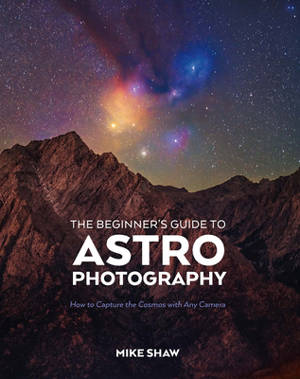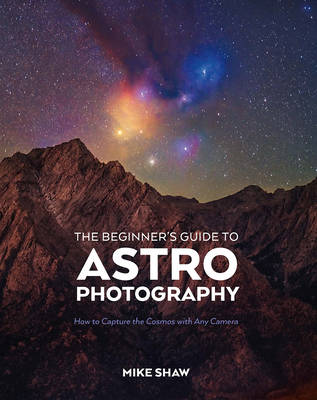
- Afhalen na 1 uur in een winkel met voorraad
- Gratis thuislevering in België vanaf € 30
- Ruim aanbod met 7 miljoen producten
- Afhalen na 1 uur in een winkel met voorraad
- Gratis thuislevering in België vanaf € 30
- Ruim aanbod met 7 miljoen producten
Zoeken
The Beginner's Guide to Astrophotography
How to Capture the Cosmos with Any Camera
Mike Shaw
Paperback | Engels
€ 48,95
+ 97 punten
Omschrijving
Now everyone can learn to take great pictures of the cosmos!The night sky is filled with immense beauty and mystery, and it's no wonder so many photographers want to learn how to take great photographs of all it contains: the moon, stars, planets, galaxies, and beyond. But for photographers just getting started photographing the cosmos, some books veer into "advanced" territory way too quickly, filled with difficult theory and long, expensive lists of "must-have" gear.If you're just starting your adventure in astrophotography, The Beginner's Guide to Astrophotography is the book for you! Photographer Mike Shaw teaches you everything you need to know to capture great images of the night sky--without breaking the bank or needing an advanced physics degree.In this book, you'll quickly gain an understanding of the night sky, then dive into gear and settings. Regardless of the camera you own (smartphone, DSLR, or mirrorless), you'll be able to capture shots you love. You'll learn all about the gear you absolutely need (and what you don't) as well as the accessories that will make your astrophotography life easier. Then you'll dive into camera technique: exposure settings, focusing tricks, and composition techniques to get the shot. You'll also learn about the best apps for astronomy, weather, planning, and navigation. Mike walks you through how to plan a shoot, set up for it, and capture your images. Finally, you'll learn the post-processing techniques that will have your images looking their best.You'll learn how to photograph: - The moon (full, crescent, lunar eclipse, solar eclipse)- The Milky Way (the core, the central band)- Constellations (Orion, Perseus, Scorpius, etc.)- Asterisms (Big Dipper, Summer Triangle, Orion's Belt, etc.)- Star trails- Planets (Venus, Jupiter, Saturn, Mars)- Aurora Borealis- Meteors- Satellites (such as the Internaional Space Station)- Nebulae- Star Clusters- Galaxies- Comets- And more!Table of ContentsChapter 1: What Is Astrophotography, Exactly?Chapter 2: Understanding the Night Sky for AstrophotographersChapter 3: Astrophotography Equipment, Setup, and TechniqueChapter 4: Landscape Astrophotography SubjectsChapter 5: Deep Sky Astrophotography SubjectsChapter 6: Choosing Where and When to ShootChapter 7: Synthesis: Your First Astrophotography SessionChapter 8: Making Your Astrophotography Images Look AmazingChapter 9: Advanced Astrophotography
Specificaties
Betrokkenen
- Auteur(s):
- Uitgeverij:
Inhoud
- Aantal bladzijden:
- 228
- Taal:
- Engels
Eigenschappen
- Productcode (EAN):
- 9781681989693
- Verschijningsdatum:
- 11/07/2023
- Uitvoering:
- Paperback
- Formaat:
- Trade paperback (VS)
- Afmetingen:
- 201 mm x 251 mm
- Gewicht:
- 657 g

Alleen bij Standaard Boekhandel
+ 97 punten op je klantenkaart van Standaard Boekhandel
Beoordelingen
We publiceren alleen reviews die voldoen aan de voorwaarden voor reviews. Bekijk onze voorwaarden voor reviews.











